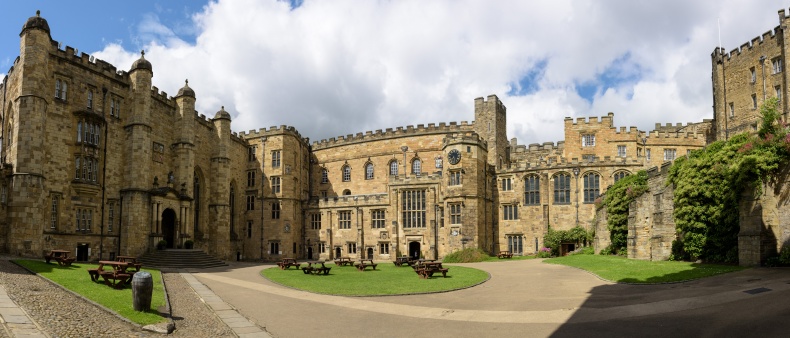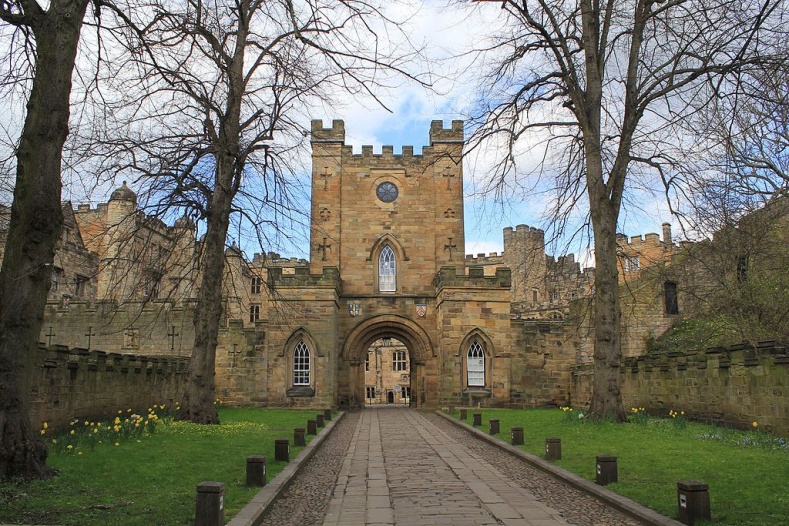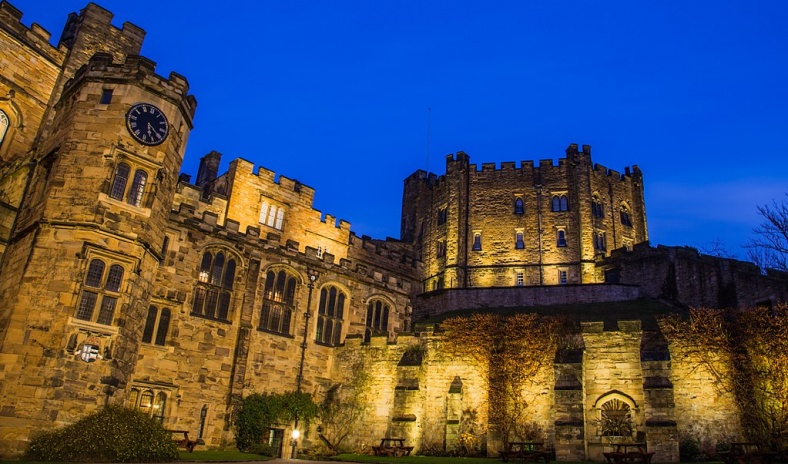


Durham University
A world top 100 university
Founded: 1832
Organization Details
Full Name: University of Durham
Field: Higher Education
Founded: 1832
Headquarters: Durham, DH1 3LE
History and Activities
Durham University is one of the UK’s oldest institutions of Higher Education in the UK. Philanthropy had a hand in the founding of the University in 1832 and has since contributed to its growth and development as a top-tier research-intensive university.
Durham, as the principal centre of religious life in the North of England before and after the English Reformation, had strong ties with the University of Oxford that persisted for many centuries. Durham College was a constituent part of the University from 1286 until 1546 when it was subsumed into Trinity College by Henry VIII. The college was financed by the Bishops of Durham to train scholars who returned to Durham after completing their studies. The system had the advantage of exposing future leaders of the northern church diverse theological opinions, but with time the idea was muted that the North would benefit from having a university of its own based in Durham at which the sons of leading northern families might be educated. The movement gained ground in the 1650s under the Commonwealth. A college was established in 1658, but this failed in 1662 under the weight of opposition from Oxford and Cambridge, fearing they might suffer from loss of exclusivity.
It was not until the early 1830s that the plan was revived in earnest. Again it was the religious leaders of Durham that took the initiative, notably Charles Thorp (1783-1862), Archdeacon of Durham, and William Van Mildert (1765-1836), the last Palatine Bishop of Durham. Both men were acutely aware that because of the Bishop’s control of large financial resources, Durham was a prime target in the movement for church reform, which was rapidly gaining momentum, leading in 1835 to the creation of the Ecclesiastical Commission and centralization of church management. Looking for ways to preserve local autonomy and protect the resources of the church, Van Mildert and Thorpe conceived the proposed new university as a training ground for clergy that would be closely integrated with everyday cathedral life. To this end, Van Mildert made over a collection of buildings on Palace Green. Approval was granted by parliament in 1832 and a royal charter issued in 1837. To pay for the salaries of professors Van Mildert transferred four of the 12 prebends (rich livings for members of the cathedral chapter) for this purpose. He personally donated £2,000 a year before his death in 1836. Charles Thorpe became the first Warden of the University.
The university, which had been long sought after by the region, gradually increased the range of subjects on offer, thereby attracting a wider range of students, eventually opening its doors to women in 1895. New colleges were established to accommodate the growing population of students, notably Hatfield Hall in 1846. The university also expanded its reach geographically within the region. The College of Medicine established in Newcastle in 1834 became part of the university in 1852. This was joined in 1871 by the College of Physical Sciences, renamed the College of Science in 1884 and Armstrong College in 1904. Both colleges prospered, growing more rapidly than the Durham colleges, and leading in 1909 to the formal creation of two divisions of the university, Durham and Newcastle. The Dean and Chapter of Durham Cathedral was then replaced as the governing body of the university. The Newcastle division was re-modelled as King’s College of the University of Durham in 1937 following the recommendations of a Royal Commission. In 1963, King’s College formally seceded to become the University of Newcastle upon Tyne. This proved liberating for both universities. At Durham, subjects long relatively neglected such as science and engineering, now had the right conditions to flourish. The university retained its collegiate structure, creating fresh colleges as needed to accommodate growth.
Philanthropists played a crucial role at decisive times and in a variety of ways in the emergence of Durham as a world-renowned institution of research and higher learning before and after the separation from Newcastle. At Durham notable donations include an early £9,000 gift by Hannah Brackenbury (1795-1873) to fund a professorship, and a large gift from Douglas Horsfall (1857-1936) to help found St Chad’s college in 1904. Dora Cruddas (1864-1926) of Haughton Castle in Northumberland, whose father William Cruddas was a partner in the famous Armstrong works at Elswick, was instrumental in the founding of St John’s Hall in 1909. The world-class collection of artefacts held at the university’s Oriental Museum is based in large part on gifts-in-kind by collectors Sir Charles Hardinge and Malcolm MacDonald, son of Prime Minister Ramsey MacDonald. In more recent times, graduate Mark Hillery (b. 1966) who made his fortune in the City as a hedge fund manager, gifted £4 million to fund the creation of an arts and sports complex at Collingwood College. Sir Peter Ogden (b. 1947), another alumnus, helped fund the £20 million Ogden Centre for Fundamental Physics, contributing a further £3.35 million in 2014.
These and many other gifts, large and small, have enabled Durham University to become the formidable organization it is today. It has an annual philanthropic income in the region of £20 million, made up of donations, income from endowment and research grants from charities. It is a member of the Russell Group of research-intensive universities and regularly comes in the top five in UK University rankings. Durham stands high in the Times Higher and QS annual rankings as a world elite, top 100, university.
Vital Statistics (year to 31/07/2017)
| Total Income (TI):
| £361,154,000
|
| Philanthropic Income (PI):
| £19,517,000
|
| PI as % of TI:
| 5.4%
|
| Employees:
| 3,955
|
| Students:
| 18,000
|
| Endowment at Year End:
| £71,982,000
|
Website
https://www.dur.ac.uk/
References
Interview with Christopher F. Higgins. (2008). The Importance of Philanthropy. Available here (Accessed: 01/08/2018).
Whitting, C.E. (1932). The University of Durham 1832-1932, London: The Sheldon Press.
McCord, N. (1998). The Northern Counties from AD 1000, London: Longman.
Middlebrook, S. (1950). Newcastle: Its growth and achievement, Newcastle: Newcastle Journal and North Mail, pp. 215-216, 279, 282, 295-298.
History of Trinity College, Oxford. Available here (Accessed: 01/08/2018).
Stell, G.P. (2004). John de Balliol. Available here (Accessed: 01/08/2018).
Jones, J. (2004). Hannah Brackenbury. Available here (Accessed: 01/08/2018).
Bettany, G.T. Matthew, H.C. G. (2004). Sir John Fife. Available here (Accessed: 01/08/2018).